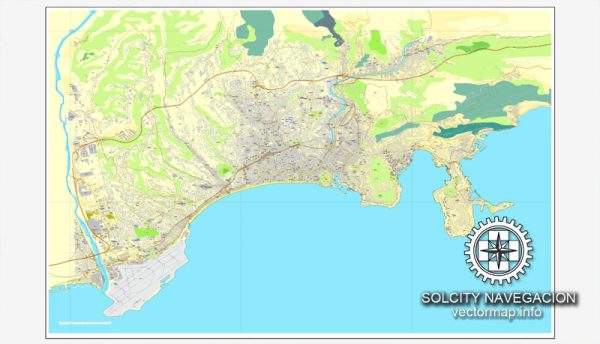Nice, located on the French Riviera, has a rich history of urban development that spans centuries. The city’s strategic location along the Mediterranean coast has attracted various civilizations and cultures throughout its history, contributing to its diverse architectural and cultural heritage. Here is a brief overview of Nice’s history of urban development:
- Ancient Times:
- Nice has ancient origins, with evidence of human settlement dating back to prehistoric times.
- The Greeks established a colony called Nikaia in the 4th century BCE, which eventually became the city of Nice. The influence of Greek culture is still visible in some archaeological remains.
- Roman Period:
- The Romans conquered the region in the 2nd century BCE, and Nice became an important Roman city known as Cemenelum.
- During this period, the Romans built infrastructure such as roads, bridges, and public buildings, contributing to the city’s development.
- Medieval Period:
- Nice went through a series of changes in ownership during the medieval period, with control passing between various powers, including the Lombards, the Saracens, and the Counts of Provence.
- The city’s fortifications were strengthened during this time to protect against invasions.
- Renaissance and Baroque Periods:
- Nice became part of the Duchy of Savoy in the 16th century. The city saw architectural developments in the Renaissance and Baroque styles, with the construction of palaces, churches, and public squares.
- French Revolution and Napoleonic Era:
- Nice was annexed by France in 1792 during the French Revolution.
- In the 19th century, during the Napoleonic era, the city experienced growth and modernization, with the construction of new roads and the expansion of the port.
- Belle Époque and the Promenade des Anglais:
- The late 19th and early 20th centuries marked a period of prosperity and cultural growth known as the Belle Époque.
- The iconic Promenade des Anglais was developed during this time, attracting tourists and becoming a symbol of the city.
- World War II and Post-War Reconstruction:
- Nice faced challenges during World War II, with periods of occupation by Italian and German forces.
- After the war, the city underwent reconstruction and urban development, with an emphasis on modern infrastructure and tourism.
- Contemporary Development:
- In recent decades, Nice has continued to evolve as a vibrant city, with modern architecture and amenities.
- The city has invested in public spaces, cultural institutions, and sustainable development projects.
Today, Nice is a dynamic and cosmopolitan city that beautifully blends its rich history with contemporary urban living. The Old Town (Vieux Nice), with its narrow streets and historic buildings, stands in contrast to the modern developments along the Promenade des Anglais, creating a unique and captivating urban landscape.


 Author: Kirill Shrayber, Ph.D.
Author: Kirill Shrayber, Ph.D.